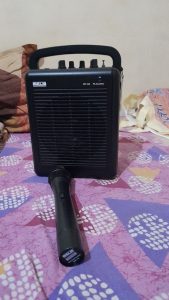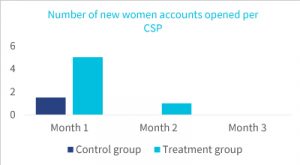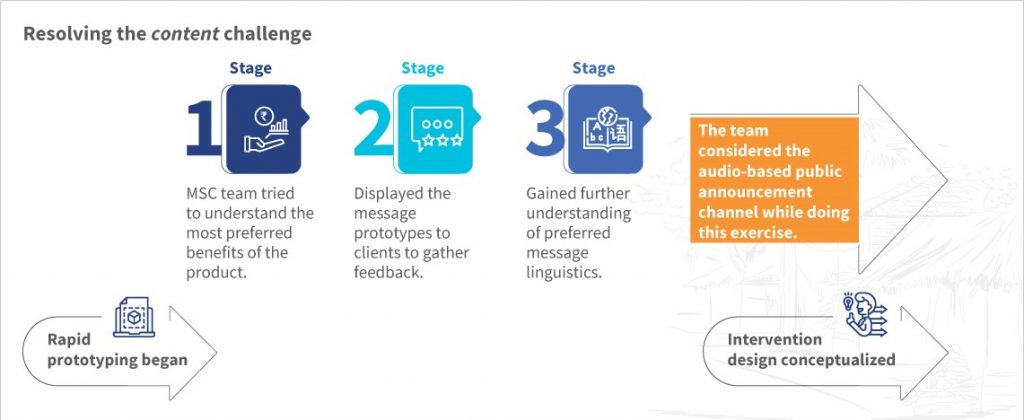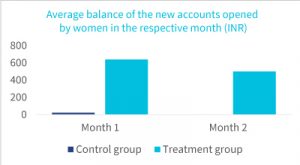Are you designing a behavior change communication message to encourage the use of agent banking among the LMI women in rural areas? Here is what you need to know.
by Anant Tiwari and Akhand Tiwari
May 17, 2022
5 min
Behavioral messaging can nudge difficult-to-penetrate segments. However, designing a clear, simple, and powerful ATL communication for the LMI segment is difficult. This blog charts the design journey of one such initiative in India.
They are often illiterate. Only some have an active bank account or a mobile phone. They largely remain at home, engaged in household work. Most are risk-averse, and depend on each other’s experiences and male household members to make financial decisions. They are women from the low- and moderate-income (LMI) segment in rural areas.
These specific factors make rural LMI women one of the most challenging segments for any financial services provider. Yet they make up almost half of the rural LMI populace and need customized financial products and services to suit their specific requirements. At the same time, they need to be reached and sufficiently enthused about the offering – so behavior change communication becomes critical.
Airtel Payments Bank, a leading scheduled payments bank in India, has tried to serve this segment with innovative product offerings, such as a feature-loaded Bharosa account. However, communicating product features is not easy with women mainly confined to their homes. MSC collaborated with Airtel Payments Bank and piloted an audio message to address this problem. The pilot results show that women who heard the audio clip saved 54 times more than women from similar geographies whom the message did not reach. You can see the entire pilot journey here.
Based on this work, it is clear that short, easy-to-absorb, and relatable messages disseminated in regional languages through a carefully matched channel result in powerful communication to the LMI women in rural areas.
Channel and content: Bridging the two pillars
A suitable response to the unique challenges faced by different target segments requires coordination between the message script and its dissemination medium. If these two do not operate in harmony, the communication will not affect the desired behavioral change in the target segment—no matter how strong they individually are.
Primary research in a few select geographies is needed to identify the channel and specific message content that syncs with it. A well-rounded primary research exercise provides context-sensitive insights to help design the message and deliver it. We used the same approach and gained important input for the message content and dissemination options suitable for rural women.
Resolving the channel challenge
When designing for the rural LMI segment, the message script depends heavily on its channel. The words in a wall painting, for example, will be very different from those used in an audio clip to convey the same message. Therefore, one must choose a channel first and then draft the message content. We found the following behavioral traits and life realities to be critical while communicating with the target segment of rural LMI women:
1. Low literacy levels: Most women in Indian villages cannot read. So we cannot use written material to communicate with them. And it is difficult to convey relatively complex ideas through picture- or icon-based, oral-friendly, communication materials.

3. Low mobility outside the household: Women in villages do not move out too often or do so for short intervals. So, if you want to connect with them outside their houses, you will have to contact them during those limited opportunities and design a communication strategy accordingly.
4. Low reachability, even within the household: Social norms in rural areas imply that women interact primarily with other women in their community. They are neither encouraged nor feel comfortable talking to people they do not know well. This norm limits the chances of connecting with them inside their homes and virtually eliminates the possibility of deploying any male agents to establish this connection.
A typical public announcement system used by Airtel Payments Bank team
We chose a portable loudspeaker for our work with Airtel Payments Bank. It would play an audio clip designed around the communication theme at various places in the village.
Resolving the content challenge
Once you have zeroed in on how to disseminate the message, the next immediate task is to develop a script. The behavioral research can provide inputs like the duration, language, tone, and script flow to design the message script. We used a rapid prototyping tool for the Airtel Payments Bank project. As part of this exercise, we read out some prototype messages to the women. Their verbal and nonverbal responses helped us understand their preferences regarding various message attributes.
This stage revealed the following critical features essential to the communication message:
- Short: The message must be brief and focus on three or four critical features without getting into details. A brief message is essential due to the limited exposure of rural LMI women to any formal financial services and their narrow attention span. Often, complexities of the design process are visible in the final output. For example, this message is simple, but the sheer length and the resultant information overload put off an LMI customer.
- Easy to understand: The message should be straightforward for the audience to assimilate. Since we intend to talk about financial services, this feature will not be easy to incorporate. A message like this can quickly fail if we use complex terms.
- Relatable: The situations used in the message must strike a chord with the audience. We discovered during our research that the script should talk about the near-term benefits of visiting Airtel Payments Bank agents that make sense to rural LMI women.
- Use a familiar tone and language: No prizes for guessing that the message needs to be in regional languages. Moreover, we found that a female voiceover better suits messages that target rural women simply because they sound familiar.
An ideal communication message will have all the features listed above simultaneously. They all work together, not in silos. The absence of one can considerably weaken the communication.
Results
Based on our research, we designed an audio clip for Airtel Payments Bank and piloted it at a few agent locations. As a result, women in these locations opened more accounts and saved more money, thereby enhancing agent income.

Where to from here?
Women play a pivotal role in running our economies. However, many of them remain financially excluded for various reasons, such as the lack of access to products and services tailored to their needs. Airtel Payments Bank and MSC have shown that we can design and deploy behavioral communication to nudge rural LMI women to use financial services through agent points. With its deep understanding of gender and expertise in behavioral research and design, MSC remains committed to supporting organizations like Airtel Payments Bank in making their services penetrate deeper into this challenging segment.
The authors thank Nitish Narain and Zeeshan Ali for contributing to this blog.
Written by

Anant Tiwari
Manager
 by
by  May 17, 2022
May 17, 2022 5 min
5 min 


Leave comments